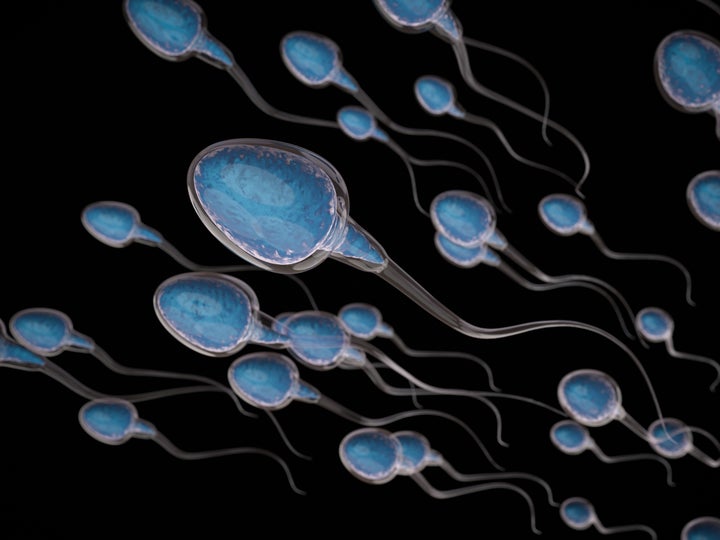
Headlines about a looming male infertility crisis have peppered the landscape in the past few months, thanks to a July study that found the sperm counts of men in North America, Europe and Australia to be on the decline.
The study, a meta-analysis of 185 research papers published from 1973 to 2011, found that there has been a 52 percent decline in sperm concentration and a 59 percent decline in total sperm count among men in Western countries.
Sounds scary, right? Based on these findings, a recent op-ed in The New York Times warned that “a male infertility crisis is coming,” while The Guardian wrote that “the infertility crisis is beyond doubt.”
Indeed, the researchers themselves are frightened by what they have found. Shanna Swan, an environmental medicine researcher at the Icahn School of Medicine at Mount Sinai in New York City, told Newsweek last summer that her study was “pretty scary,” while Hagai Levine, a public health researcher at Hebrew University in Israel, summed it up this way: “Something is very wrong with men.”
But while sperm analysis, which, besides sperm count, measures sperm shape and sperm movement, is currently one of the few ways to assess male fertility, the truth is that the relationship between sperm count and fertility is actually pretty weak.
It takes only a single sperm to successfully fertilize an egg, and even men on the lower end of the sperm production scale still produce millions of them. This makes other experts skeptical of the claim that our ability to have children is dwindling.
“It is entirely possible for sperm counts to be declining (and this is a story that has been doing the rounds for at least 15 years), without their being a corresponding decrease in male fertility,” said Fiona Mathews, a professor of environmental biology at the University of Sussex. Mathews was not involved in the meta-analysis but has studied the effects that environmental factors have on sperm quality.
“The results of this cited study cannot be interpreted as a decline in male fertility,” agreed Dr. Aaron Styer, co-medical director of CCRM Boston, part of a national network of fertility clinics throughout the U.S. Styer was also not involved in the meta-analysis and said he does not agree that the West is facing a male infertility crisis.
There is no “gold standard” test for male fertility
Barring azoospermia, which is when a man doesn’t produce any sperm at all, scientists don’t have a concrete way to define the minimum number of sperm per milliliter needed to successfully conceive. Using semen samples collected from men who had conceived within 12 months of trying (the traditional test of fertility), the World Health Organization notes that they had at least 15 million sperm per milliliter.
This figure is now used as a minimum threshold for normal male sperm parameters, and indeed, Swan and Levine’s meta-analysis also revealed that the proportion of men who fell below this level was also increasing. However, this doesn’t necessarily mean that these men were infertile or struggled to conceive children.
Styer also pointed out that because the meta-analysis is a combination of many different studies, with many different kinds of patients and methods for counting sperm, there could be some inherent inconsistencies with the data. Semen is incredibly variable, and several samples from the same man could vary greatly over the course of time. A better study design, Styer said, would be to follow the same group of men over a long period of time to see if sperm counts really were declining or if the men had low sperm counts to begin with.
Birth rates are down in the West, but the reasons are complex
In an email to HuffPost, Swan agreed that, while male sperm count and male infertility were not the same, she did say they were “clearly related.” Swan also said that there was no question that fertility, which she defined as the number of babies born to a couple, has decreased in Western countries over time.
While this is true, complex social factors, including the parents’ education, career and lifestyle choices, may influence the number of children a family chooses to have ― not just sperm quality.
Levine, in the email, pointed out that, in the countries included in their meta-analysis, there has been “huge” demand for fertility treatments, which means that a significant proportion of couples is struggling to conceive.
It is true that infertility affects about one in eight couples — at least in the U.S. — and that in about 30 percent of cases, male infertility is the cause. But the increase in fertility treatments could also be linked to a delay in starting a family, rising awareness of fertility problems and greater access to medical care.
While sperm counts certainly are declining, headlines linking the drop to an increase in infertility are exaggerated and alarmist. Currently, scientists do not know if this drop is affecting people’s ability to have children or is linked to an increase in infertility treatments.
However, if the news has men concerned, there are a handful of lifestyle changes they can make to improve their numbers. For instance, obesity, smoking, stress and sedentary lifestyles have all been linked to decreases in sperm count and quality, said Dr. Jesse Mills, a urologist and director of The Men’s Clinic at UCLA.
One thing we can all agree on is the need for much more research. Scientists should and will continue to examine the potential causes for the sperm count drop on a global scale, which could implicate everything from chemicals in everyday objects to air pollution to the radiation from our cellphones, as well as evaluate sperm count’s relationship to fertility.